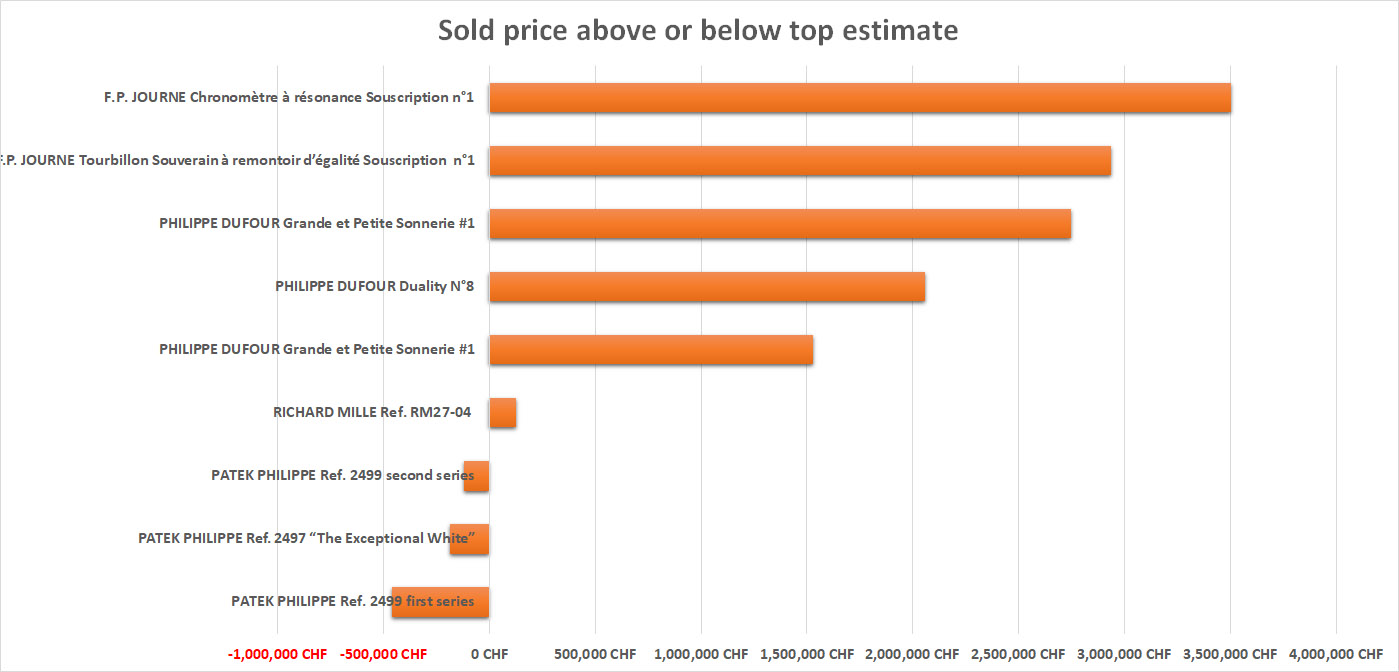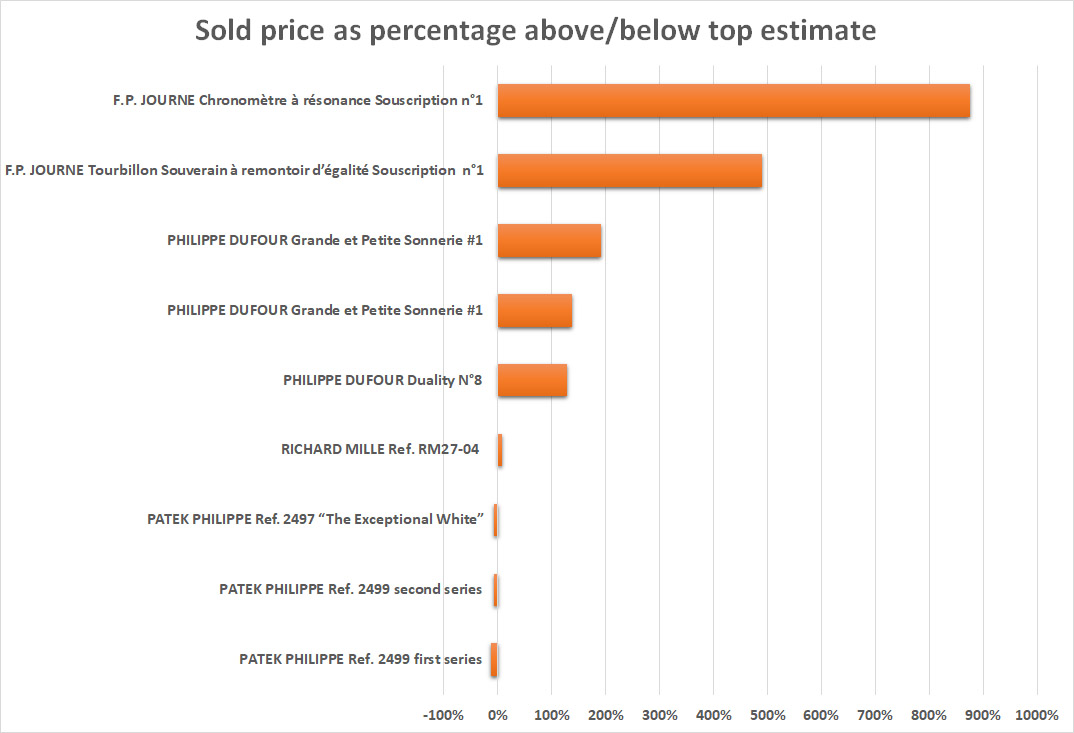If the pandemic has taught me anything, it is the fallibility of experts.
I have long since tuned out of Downing Street press conferences with the Four Horsemen of the Apocalypse forecasting near vertical rises in covid hospitalisations and deaths that rarely materialised.
The stakes are somewhat lower for auctioneers trying to estimate prices, but ultimately auction estimates are of no use at all if they are not generally close to the mark.
Approaching this autumn’s major Geneva watch sales, it was expected to be business as usual for the biggest brands: Patek Philippe, Rolex, Audemars Piguet and Richard Mille, which routinely command the highest prices.
Auctioneers at Phillips duly attached the highest estimates, often in the millions of Swiss francs, to the usual suspects like Patek Philippe Ref. 2499 grand complications.
There has been growing excitement, and prices to match, for independent watchmakers such as Philippe Dufour and F.P. Journe over the past two years, and Phillips did attach some eye-catching estimates for their timepieces including a CHF 2 million forecast for Philippe Dufour’s Grande et Petite Sonnerie #1.
Although the direction of the market for independent watchmakers has been widely reported (not least by WATCHPRO), this weekend’s results for the Phillips Geneva Watch Auction XIV were unexpected.

F.P. Journe watches obliterated their top estimates for Souscription No.1 watches.
Philippe Dufour’s numbered timepieces were not far behind.

Both watchmakers’ watches were incredibly rare — unique if you consider No.1 of any reference to be different to No.2 or 3 — which encourages bidding battles between collectors, but this could have been foreseen by the estimators.
Patek Philippe grand complications are, arguably, easier to value because they come to auction so much more often.
The job of estimates in these cases is to pique interest and encourage as many buyers as possible to pile in.
It is hard to say, when watches are selling for seven figures, that this tactic failed, but relative to the independents, Patek Philippe had a poor auction with only three of its watches making the top 10 list, and all three of them selling for below their top estimates.
One watch that deserve a special mention is a 1957 Omega Ref. 2915-1 “Tropical Broad Arrow”, which sold for CHF 3.1 million, 2496% above its CHF 120,000 estimate. The result is such a black swan that I have not included it in my graphs because it would have made all other results difficult to visualise.
It may be too early to say whether the results of the Auction XIV are a failure of forecasting, a unique set of results that could not have been predicted or a significant shift in the collectors’ market towards living artisan watchmakers.
My hunch is that the shift towards living independents will be with us for many years, which will have a transformative effect on the top end of the market.
As I have argued previously, if money is flooding towards artisans, it will encourage more watchmakers to move into that part of the business and this could trigger a talent drain out of group brands’ workshops because the rewards — financially and creatively — are potentially huge in the independent world.
CORDER’S COLUMN: Rise of independents could drain talent from watchmaking giants

